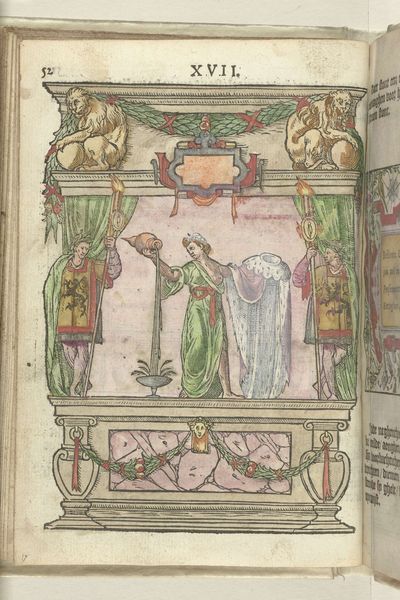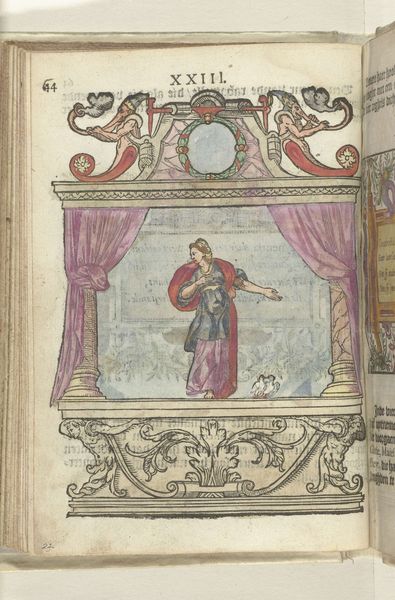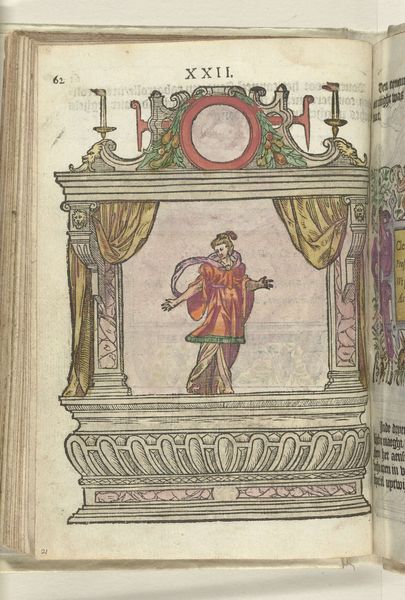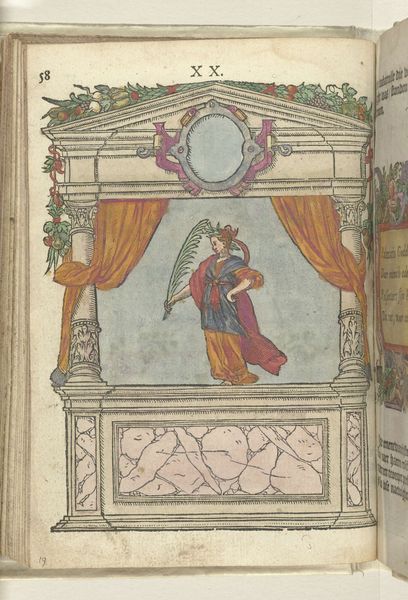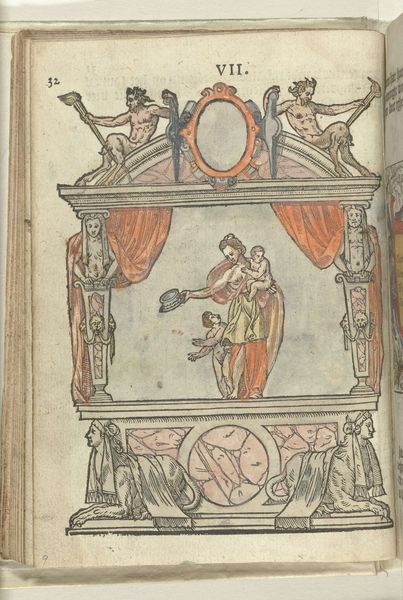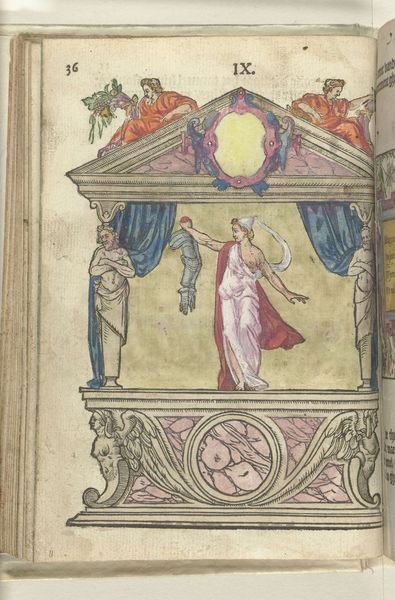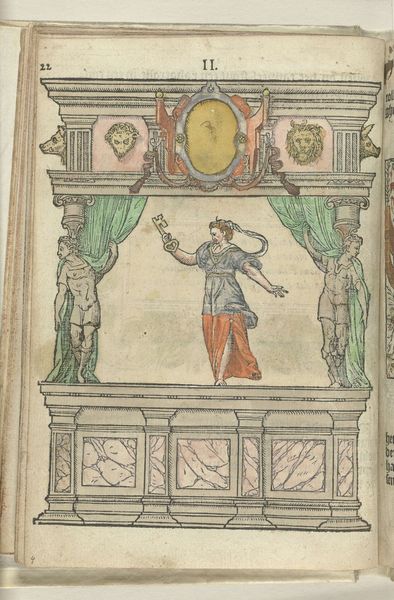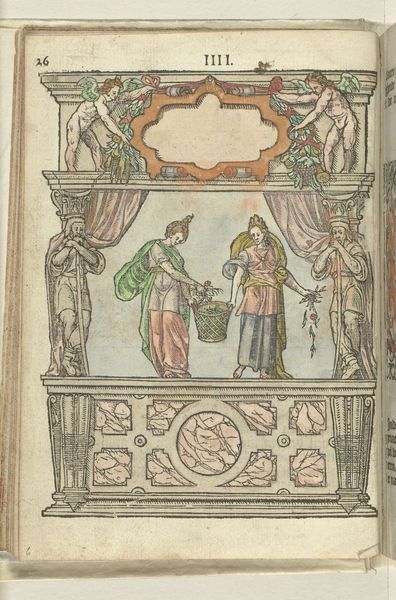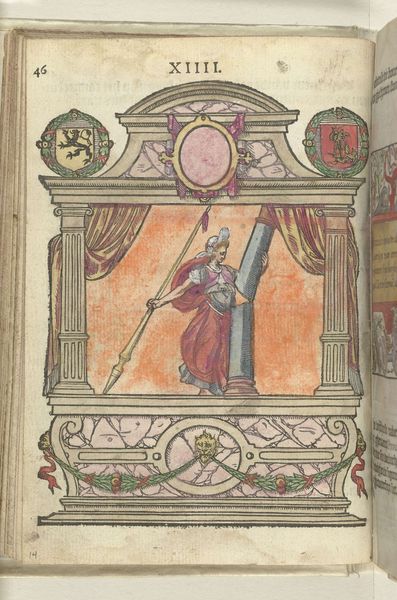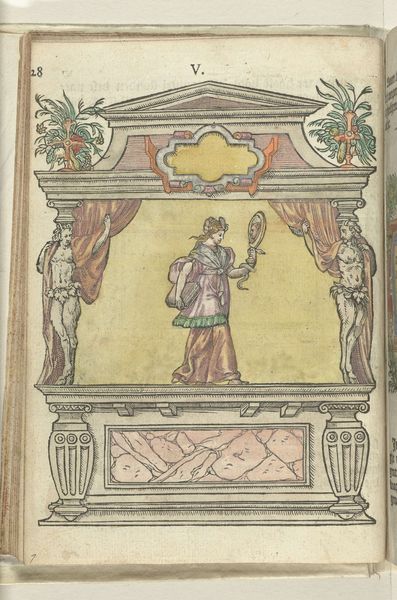
Toneel met de personificatie van Vrijgevigheid (Liberalitas), 1578 1578 - 1579
0:00
0:00
drawing, coloured-pencil, paper, ink
#
drawing
#
coloured-pencil
#
allegory
#
mannerism
#
figuration
#
paper
#
11_renaissance
#
ink
#
coloured pencil
#
watercolour illustration
#
history-painting
#
watercolor
Dimensions: height 155 mm, width 115 mm
Copyright: Rijks Museum: Open Domain
Curator: Antoni van Leest created this drawing, dating back to 1578-1579, called "Toneel met de personificatie van Vrijgevigheid", or "Stage with the personification of Generosity" in English. The work on paper features ink and coloured pencil, bringing to life a Mannerist allegory. It's interesting to see it now and consider the political climate it arose from. Editor: My immediate impression is one of controlled abundance. There's this figure, seemingly scattering coins while holding a cornucopia overflowing with produce. It's quite literally staged, isn’t it, with drapes and architectural framing. Curator: Absolutely. Van Leest was working during a period of significant socio-political tension, particularly the Dutch Revolt. The use of "generosity" as a central theme is worth considering in that light. Editor: I'm intrigued by the figure herself. The crown of wheat suggests prosperity, and that cascade of coins certainly reinforces the idea of lavish giving. But is it simply generosity, or perhaps something more calculated? A performance, as you say? Curator: Precisely! The concept of 'liberalitas' wasn't just about handing out coins. It was tied to ideas of power, patronage, and even political propaganda. In the 16th century, rulers often used displays of generosity to solidify their authority and gain popular support, and Antoni was likely depicting the power dynamics within the Dutch political sphere. Editor: So, the image itself is a complex symbol. The act of giving could be interpreted both as benevolence and strategic control, depending on who's benefiting from the coins, which definitely contextualizes generosity in relationship with social position. Curator: Precisely, especially within a religious reformation. We cannot ignore the implications for Dutch identity. Generosity takes a specific role to highlight power struggles when looking at this piece from that perspective. Editor: It prompts me to consider the very idea of generosity – what is its symbolic language? What do we remember from these sorts of portrayals? Curator: Van Leest uses a very particular visual vocabulary to shape contemporary perception. His allegory serves both as a historical marker of a struggle, and, I’d add, something rather current. Editor: A fascinating image; it clearly transcends the act of simple depiction. Thank you for guiding us through this artifice. Curator: It invites questions not just about the past, but our very value systems, and I think that is its most compelling and ongoing relevance.
Comments
No comments
Be the first to comment and join the conversation on the ultimate creative platform.
